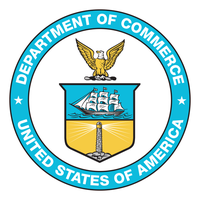Tariff Tango: The US and EU Dance Around Trade Deals
April 26, 2025, 5:06 pm

Location: United States, District of Columbia, Washington
Employees: 10001+
Founded date: 1903
Total raised: $4M

Location: United States, District of Columbia, Washington
Employees: 1001-5000
Founded date: 1944
Total raised: $33.23M

Location: Belgium, Brussels-Capital, Brussels
Employees: 1001-5000
Founded date: 1958
Total raised: $310.85K
The trade stage is set, but the performers are hesitant. The United States and the European Union are locked in a complex dance of tariffs and negotiations. The music is discordant, and the rhythm is off. Recent statements from EU Economic Commissioner Valdis Dombrovskis reveal that a deal to eliminate tariffs is still a distant dream. The US has shown only lukewarm interest in the EU's offer of zero tariffs on industrial goods. Meanwhile, the EU is wary of a potential flood of Chinese goods redirected from the US market.
The backdrop of this trade drama is a series of tariffs imposed by the US. In March, the US slapped a hefty 25% tariff on EU cars, steel, and aluminum. This was followed by a 20% tariff on other EU goods in April, which was later halved, creating a 90-day window for negotiations. The EU responded by suspending its own tariffs on some US goods and proposing a zero-tariff agreement. Yet, Dombrovskis describes the US response as "moderate."
The EU's value-added tax (VAT) has emerged as a sticking point. The US views it as a trade barrier, while the EU insists it is merely a consumption tax. Dombrovskis argues that VAT is essential for funding European governments and should not be part of trade discussions. This disagreement illustrates the chasm between the two sides.
The EU is also keeping a watchful eye on China. With the US market effectively closed to Chinese goods due to steep tariffs, there is concern that China may redirect its exports to Europe. Dombrovskis has urged Chinese officials to prevent this potential influx. He warns that if Chinese goods flood the EU market, the bloc will take countermeasures to protect its economy. This could lead to a domino effect, further fragmenting the global economy.
The stakes are high. The US and EU are not just negotiating tariffs; they are navigating a complex web of economic relationships. The potential for a trade war looms large. The EU's readiness to protect its markets signals a willingness to engage in a tit-for-tat response if necessary.
In the US, President Donald Trump's trade policies have added another layer of complexity. Since his return to the presidency, Trump has imposed tariffs on a wide range of imports, including a staggering 145% on Chinese goods. His approach has been erratic, swinging between imposing tariffs and offering temporary reprieves. This unpredictability has rattled financial markets and strained relationships with trading partners.
Despite the chaos, Trump maintains that negotiations are ongoing. However, Chinese officials have dismissed claims of active talks, calling them "groundless." The disconnect between the two nations is palpable. While the US touts its efforts to secure trade deals, the reality is that meaningful negotiations have yet to materialize.
The EU's economy minister has echoed this sentiment, stating that an agreement with the US is still "a long way off." The mixed signals from the US government only add to the confusion. While some officials express optimism about reaching agreements with other trading partners, the situation with the EU and China remains fraught with tension.
As the clock ticks down on the 90-day negotiation window, the pressure is mounting. The potential for tariffs to escalate further is a looming threat. The EU's proposal for zero tariffs could be a lifeline, but the US's reluctance to engage fully leaves the future uncertain.
In this intricate dance of trade, both sides must find common ground. The EU's commitment to protecting its markets and the US's insistence on favorable terms create a challenging environment. The outcome of these negotiations will have far-reaching implications for global trade dynamics.
As the US and EU continue their tariff tango, the world watches closely. The stakes are high, and the consequences of failure could be dire. A trade war could lead to economic fragmentation, affecting not just the US and EU, but the entire global economy.
In conclusion, the path to a trade agreement between the US and EU is fraught with obstacles. The dance of tariffs is complex, and both sides must navigate their differences carefully. The future of international trade hangs in the balance, and the world waits to see if a harmonious resolution can be achieved. The clock is ticking, and the music of trade negotiations plays on.
The backdrop of this trade drama is a series of tariffs imposed by the US. In March, the US slapped a hefty 25% tariff on EU cars, steel, and aluminum. This was followed by a 20% tariff on other EU goods in April, which was later halved, creating a 90-day window for negotiations. The EU responded by suspending its own tariffs on some US goods and proposing a zero-tariff agreement. Yet, Dombrovskis describes the US response as "moderate."
The EU's value-added tax (VAT) has emerged as a sticking point. The US views it as a trade barrier, while the EU insists it is merely a consumption tax. Dombrovskis argues that VAT is essential for funding European governments and should not be part of trade discussions. This disagreement illustrates the chasm between the two sides.
The EU is also keeping a watchful eye on China. With the US market effectively closed to Chinese goods due to steep tariffs, there is concern that China may redirect its exports to Europe. Dombrovskis has urged Chinese officials to prevent this potential influx. He warns that if Chinese goods flood the EU market, the bloc will take countermeasures to protect its economy. This could lead to a domino effect, further fragmenting the global economy.
The stakes are high. The US and EU are not just negotiating tariffs; they are navigating a complex web of economic relationships. The potential for a trade war looms large. The EU's readiness to protect its markets signals a willingness to engage in a tit-for-tat response if necessary.
In the US, President Donald Trump's trade policies have added another layer of complexity. Since his return to the presidency, Trump has imposed tariffs on a wide range of imports, including a staggering 145% on Chinese goods. His approach has been erratic, swinging between imposing tariffs and offering temporary reprieves. This unpredictability has rattled financial markets and strained relationships with trading partners.
Despite the chaos, Trump maintains that negotiations are ongoing. However, Chinese officials have dismissed claims of active talks, calling them "groundless." The disconnect between the two nations is palpable. While the US touts its efforts to secure trade deals, the reality is that meaningful negotiations have yet to materialize.
The EU's economy minister has echoed this sentiment, stating that an agreement with the US is still "a long way off." The mixed signals from the US government only add to the confusion. While some officials express optimism about reaching agreements with other trading partners, the situation with the EU and China remains fraught with tension.
As the clock ticks down on the 90-day negotiation window, the pressure is mounting. The potential for tariffs to escalate further is a looming threat. The EU's proposal for zero tariffs could be a lifeline, but the US's reluctance to engage fully leaves the future uncertain.
In this intricate dance of trade, both sides must find common ground. The EU's commitment to protecting its markets and the US's insistence on favorable terms create a challenging environment. The outcome of these negotiations will have far-reaching implications for global trade dynamics.
As the US and EU continue their tariff tango, the world watches closely. The stakes are high, and the consequences of failure could be dire. A trade war could lead to economic fragmentation, affecting not just the US and EU, but the entire global economy.
In conclusion, the path to a trade agreement between the US and EU is fraught with obstacles. The dance of tariffs is complex, and both sides must navigate their differences carefully. The future of international trade hangs in the balance, and the world waits to see if a harmonious resolution can be achieved. The clock is ticking, and the music of trade negotiations plays on.